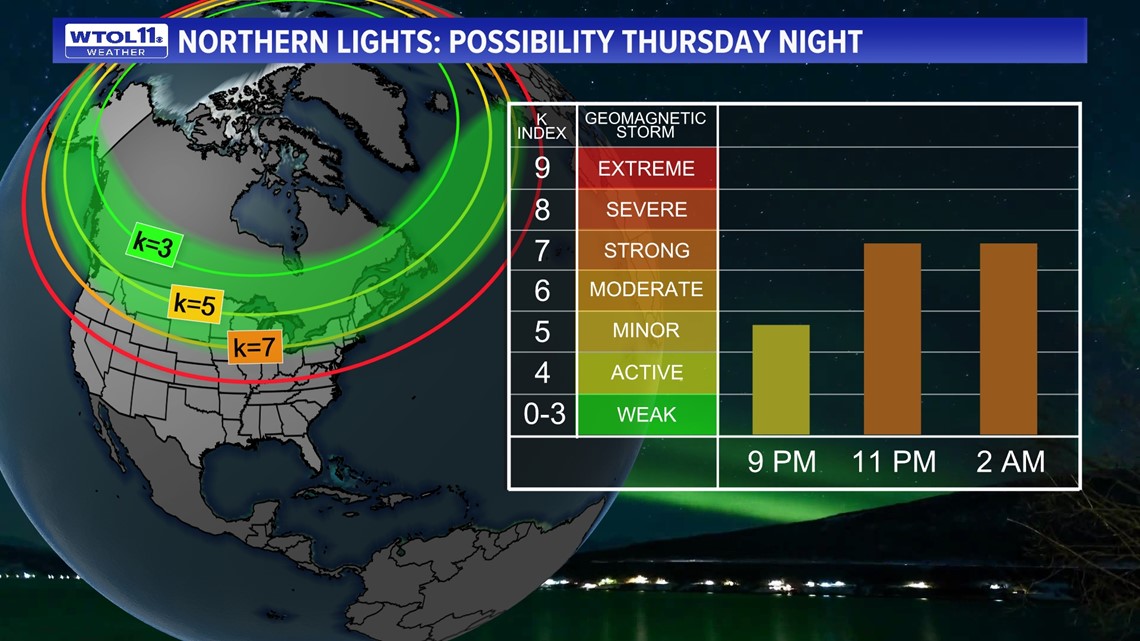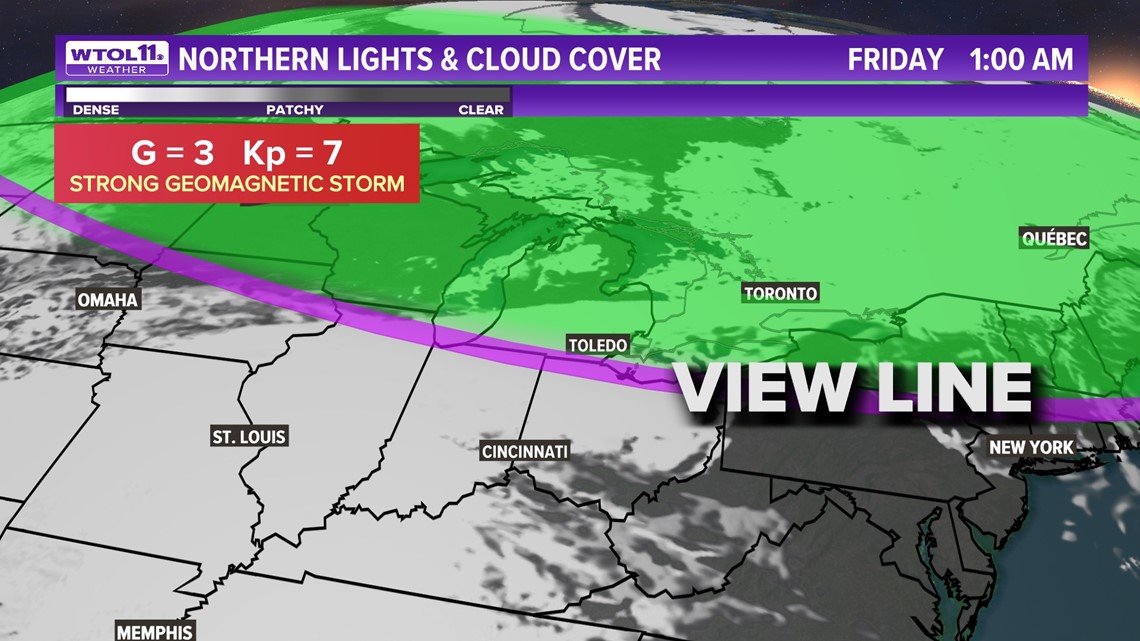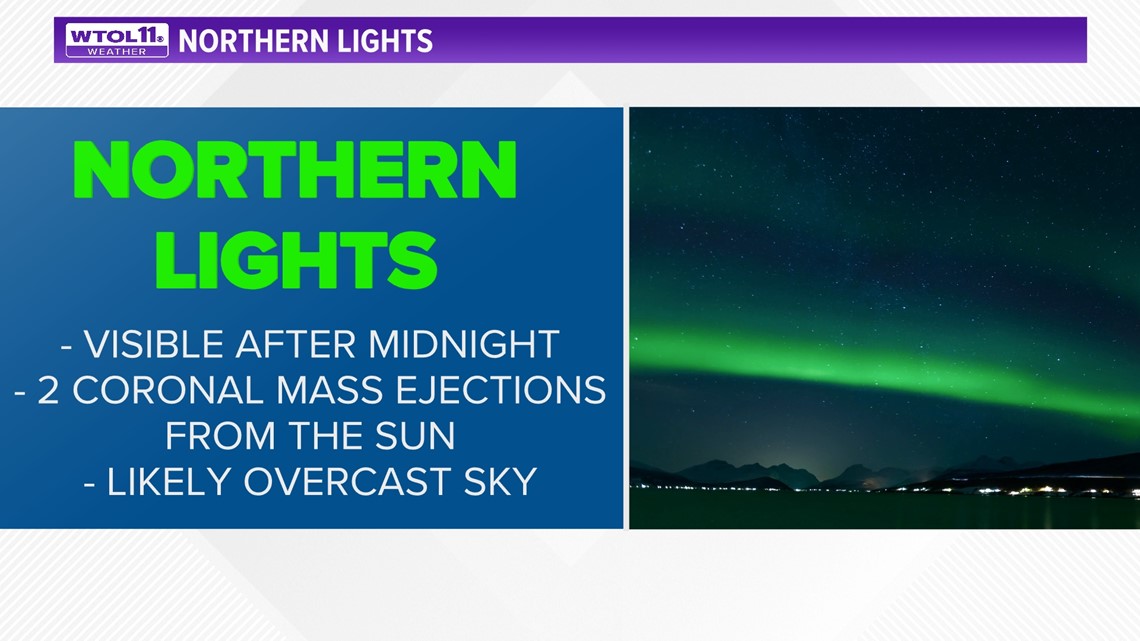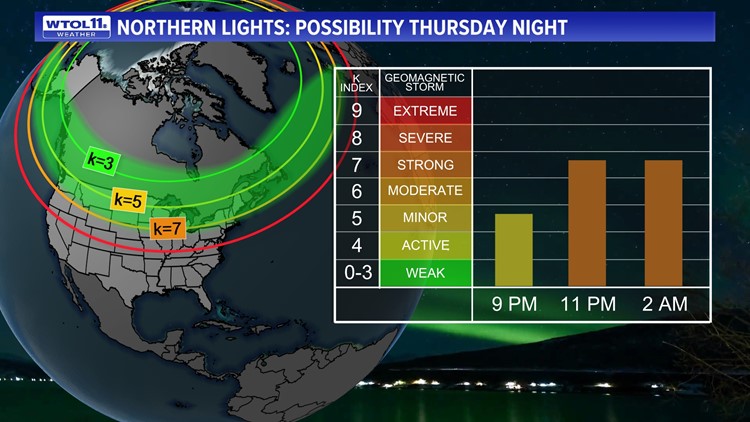TOLEDO, Ohio — Scientists are forecasting a solar storm Thursday night, which is expected to bring a display of northern lights to much of Alaska, Canada and parts of the northern U.S.
A strong geomagnetic storm is expected to arrive late Thursday night and into early Friday morning. There are a total of four incoming Earth bound Coronal Mass Ejections (CMEs). The latest CME is a faster moving "full halo," which is expected to merge with at least 2 of the 3 already inbound CMEs arriving sometime Thursday night and into early Friday morning.
Although a display of the northern lights, or aurora borealis, is typical in some northern latitudes, seeing them as far south as the Midwest is considered uncommon. However, weather and location permitting, you might be able to catch a glimpse of the ethereal and ephemeral phenomenon. Here's what you need to know.
Understanding the Kp index
According to the National Oceanic and Atmospheric Administration (NOAA), geomagnetic storms are measured on an scale called the Kp Index, which measures aurora strength. The scale ranges from 0 to 9, the latter of which would represent a major geomagnetic storm, while the former represents calm activity. Any Kp reading 5 and above is considered a geomagnetic storm.
Thursday's storm (Kp 7) is considered "High (++) Activity".
Location
How far south the aurora will stretch depends on the strength of the storm. At Kp 7, the NOAA is forecasting the aurora will be visible overhead as far south as lower Michigan.


Weather
Unfortunately, cloud cover will dominate much of northwest Ohio and southern Michigan Thursday. However, the maps below show clear skies a few hours to the north.




If you are able to travel a few hours into mid-Michigan, clear skies will prevail, and you may be able to see the northern lights.
Once you've arrived at your viewing area of choice, find an open field, dark sky park or along a large body of water and face north.
Time
The geomagnetic storm will begin with "minor" activity at 9 p.m. This will be visible as south as Michigan's upper peninsula and the Great Plains.
From 11 p.m. to 2 a.m., the geomagnetic storm will increase to "strong". It's at this time the northern lights would likely be visible in Michigan, weather permitting.


MORE FROM WTOL 11


